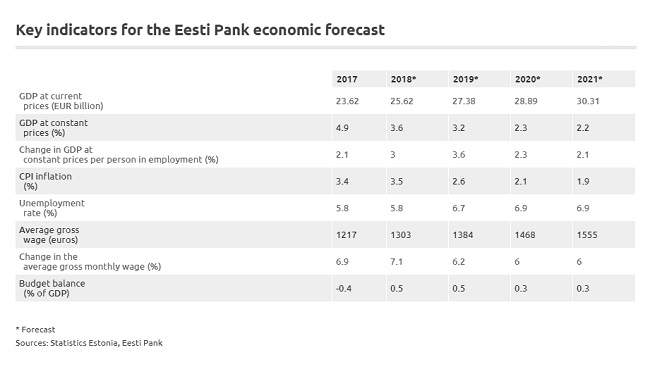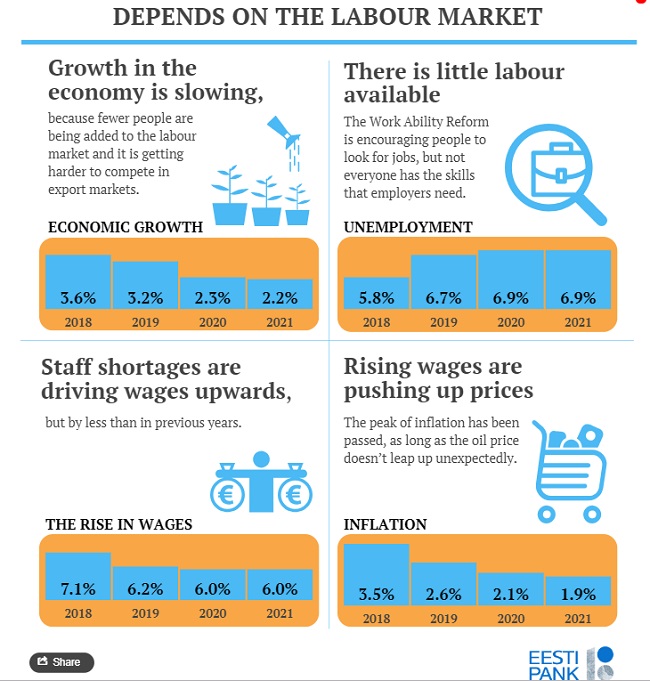Analytics, Banks, Direct Speech, Economics, Estonia, Labour-market, Wages
International Internet Magazine. Baltic States news & analytics
Wednesday, 24.04.2024, 07:09
The fall in competitiveness in the economy points to trouble ahead
 Print version
Print version |
|---|
The growth in labour costs in Estonia has been among the fastest in Europe, which has hindered the export of Estonian products, as prices for Estonian exports are rising faster than those of competing products. The share held by Estonian exports in the markets of Estonia’s main trading partners first started to shrink in 2017, while the economies of those countries were doing exceptionally well and growth was fast. Labour shortages are causing wages to keep rising in Estonia, which is making production ever more expensive. As the full impact of rising wages is only felt after some years, the deterioration in competitiveness casts a shadow over the years ahead.
Governor of Eesti Pank Ardo Hansson said, “We face a genuine danger of ending up with a similar fate to that of Finland a few years ago. The economy there cooled while wages continued to rise fast. This reduced the competitiveness of exports, after which there was a recession that lasted several years. The example of Finland shows that the consequences for the economy of losing competitiveness can linger for years, during which time people’s incomes do not rise”.
Rapidly rising wages will force Estonia to abandon low-productivity manufacturing. Relatively more people are employed in manufacturing in Estonia than in the other two Baltic states, and productivity is lower in manufacturing than in other branches of the economy. This means that there is still quite a lot of low-productivity production in Estonia, and this will be forced to close if labour costs continue to rise in the coming years. Industrial sectors with low productivity have already lost workers, and this trend is likely to continue. The movement of workers to jobs with higher productivity will overall have a beneficial effect on the economy. The economy as a whole would suffer though from a climb in wages if the main movement was purely to jobs with higher wages but where productivity and pay were not aligned.
Inflation is falling in Estonia, mainly because of taxes and energy. Inflation peaked in 2018 and from 2019 it will come down to close to 2%. Although the peak of the economic growth cycle has been passed, the tightness of the labour supply will keep wage growth fast and will boost prices of services in particular and also of goods. Equally, the substantial impact on overall inflation seen in earlier years from tax rises will fade and higher energy prices will not affect the cost of the consumer basket as much as before.
Despite the slower growth in the economy, tax receipts in Estonia will be higher than usual and so it would be reasonable for the government to plan its spending up to 2021 with a surplus in the budget. This would allow reserves to be built up during the good times that could be used to stoke the Estonian economy during the downswing of the economic cycle.










 «The Baltic Course» Is Sold and Stays in Business!
«The Baltic Course» Is Sold and Stays in Business!

